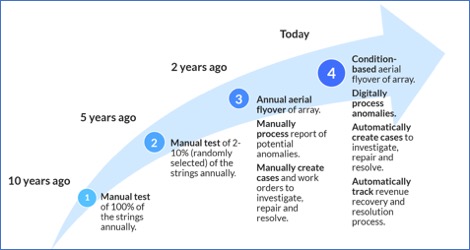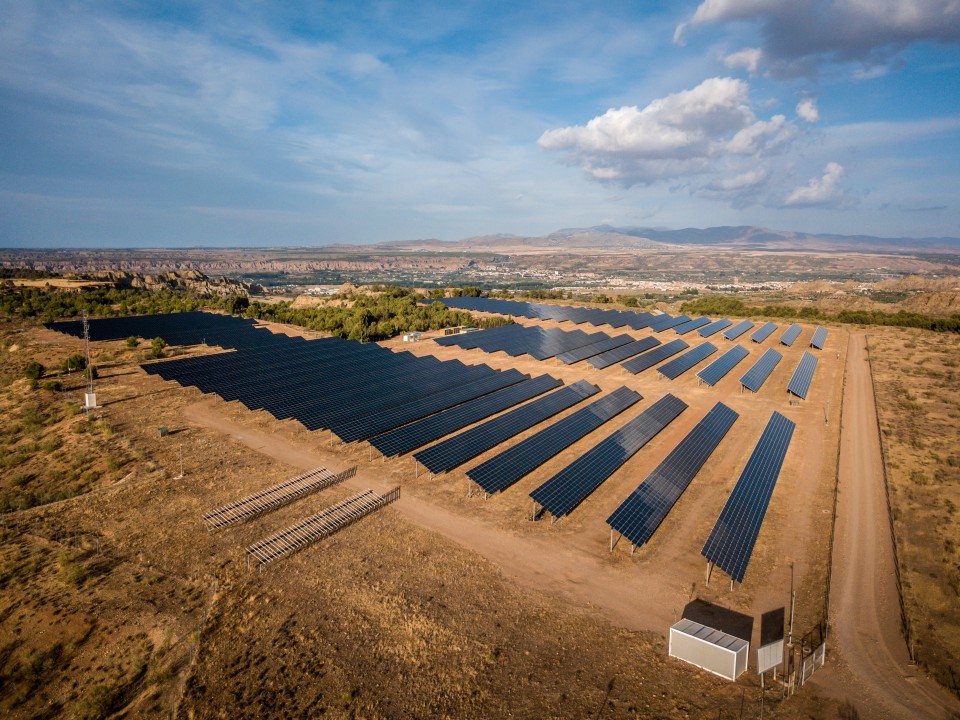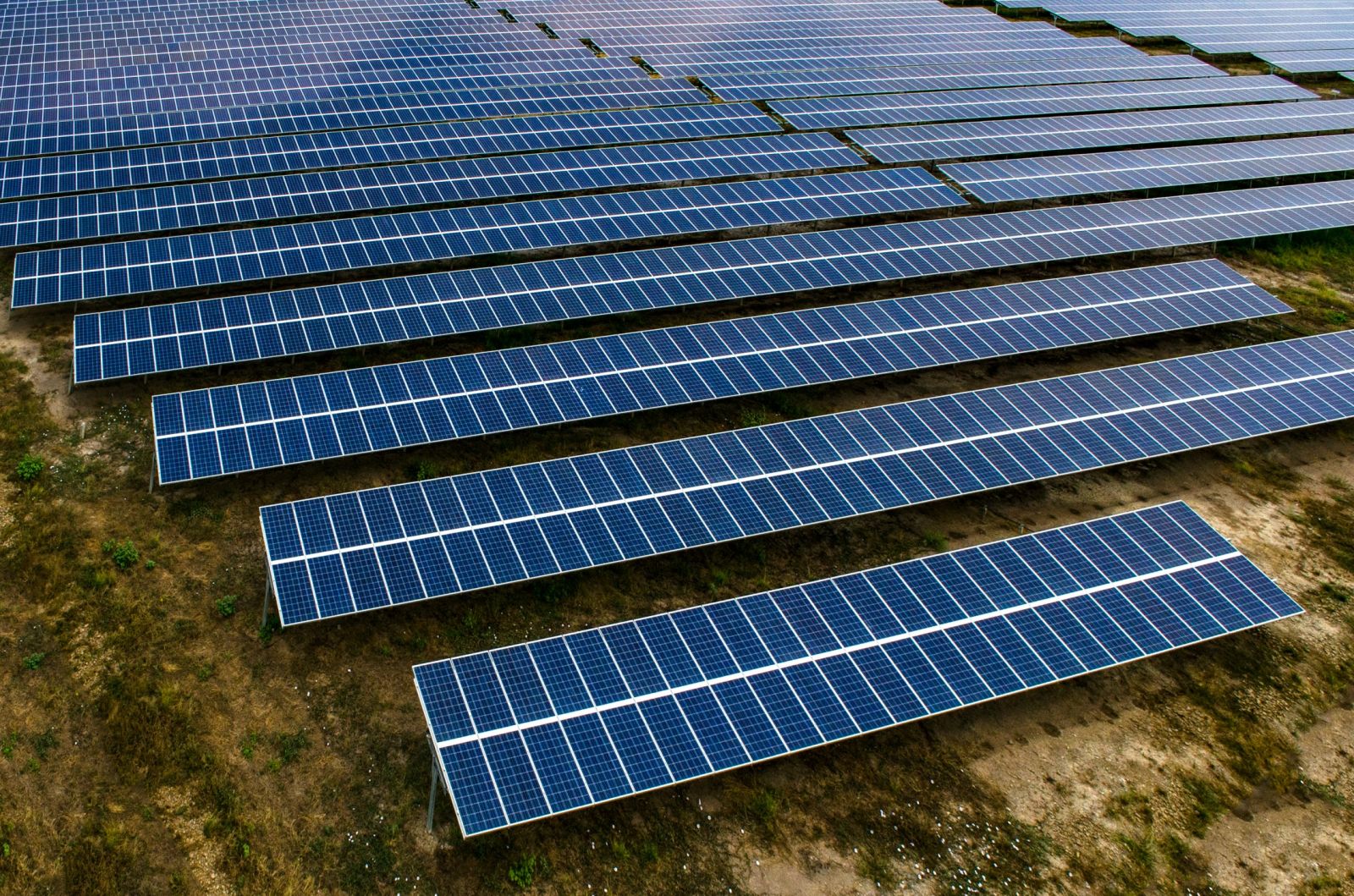The Digital Transformation of Solar Power Maintenance Practices
The DC array, made up of hundreds to millions of un-instrumented electrical circuits, houses the majority of solar production losses. Because of this, the biggest opportunity for improving solar plant performance lies within DC array. Whether the losses are in the PV modules themselves or downstream in the strings, conductors, combiners or recombiners, efforts should focus on the DC array to most improve solar plant production and revenue.
Long aware of this fact, PV operations and maintenance (O&M) personnel developed a variety of maintenance approaches to locate where in the array DC losses are occurring. Methods evolved from simple and manual, to more complex and automated. To understand the potential of digital transformation for the future of PV string maintenance, it is helpful to first review the evolution of DC string maintenance and monitoring.
 When I first got into the solar power business in 2007, it was common for O&M agreements to require operators to perform string testing (DC voltage and current testing) on 100 percent of the strings every year. As plants got bigger, this became tedious and economically infeasible. As a result, O&M contracts were adjusted to include random tests of a small percentage of the strings each year.
When I first got into the solar power business in 2007, it was common for O&M agreements to require operators to perform string testing (DC voltage and current testing) on 100 percent of the strings every year. As plants got bigger, this became tedious and economically infeasible. As a result, O&M contracts were adjusted to include random tests of a small percentage of the strings each year.
For a time, these manual tests of a randomly selected strings were the best way to find DC losses. Then people started attaching thermal-imaging cameras to drone and fixed-wing aircraft, enabling PV module and circuit hot spot detection from the sky.
A few aerial thermography pioneers started conducting PV plant flyovers, demonstrating that the technology detected problems with a high degree of detail and accuracy. But the method proved cost-prohibitive until more vendors flooded the market and aerial thermography prices dropped. Aerial thermography soon became standard practice for maintaining solar power plants.
While aerial thermography vendors worked to improve aerial thermography technology, a few performance monitoring vendors made progress developing asset monitoring software that could also identify losses in the DC array.
The benefit of these asset performance monitoring software solutions is that they are continuous-generating events automatically when predefined loss thresholds are triggered. The shortcoming of these monitoring solutions is that, without access to data from very granular DC array sensors, they only identify certain types of losses in areas of the array. Aerial thermography inspections, on the other hand, detect not only module-level losses but also individual cell-level problems within the module.
Wouldn't it be great to integrate the two and bring the benefits of both technologies together?

Better Together
The key to better solar power plant performance is to move beyond availability improvements to production improvements. That's not to say that plant and equipment availability aren't important-they are. However, given that most well-run solar projects are already experiencing a 98-99 percent technical availability, there is not much room for solar project uptime improvements.
To move the needle in project energy production, we need to identify and resolve DC array performance losses. With the aerial thermography services now on the market, we have a commercially viable way to do that. The shortcomings of aerial thermography services are that they are "batch" or periodic services, and they are not digitally integrated with work management system workflows.
For example, if a flyover inspection occurred at a plant on Tuesday, and a lightning storm hit the same plant on Wednesday, that plant might experience a whole new set of DC performance losses. Theoretically, those losses could go undetected for another year (until the next aerial inspection is scheduled). Though the real-time monitoring system might not be able to detect the exact location of those lightning-induced losses, it could detect which arrays were affected and the types of losses.
A real-time monitoring service operational event dashboard can alert operators and asset managers of a new performance loss event. The integrated work management system then can assign a work order to investigate, confirm, and repair the damage. In other words, by combining the best features of each service through digital integration, "the whole is greater than the sum of its parts."
Another benefit of leveraging digital transformation in the area PV string maintenance is the ability of modern advanced analytic systems to learn. The feedback loop from the aerial inspection results can be used to train the machine learning algorithms to better characterize the "loss signature" of different performance losses. The continuously improved loss signature enables the digital twins to detect losses faster and more reliably.

Outcomes and Benefits
Digitally integrating aerial thermography results with a continuous performance monitoring technology delivers faster performance loss detection and loss recovery. Because solar power is a zero marginal cost technology (other than paying for additional remediation costs), all incremental revenue from the recovery project flows directly to the bottom line.
Integrating aerial inspection data, performance monitoring data, and field service work orders brings the additional benefit of creating an automated project tracking system. As work orders are updated, project reports are automatically generated to track recovered revenue, project status, and labor and material costs. Owners and asset managers with visibility into the platform are continually updated on current revenue recovery efforts, as well as outstanding maintenance efforts.
It is a sign of a maturing industry when owners, operators, and vendors begin working together to solve complex problems like solar DC array performance loss recovery. General solutions and a one-size-fits-all approach are not the answer. History has shown that deep domain knowledge and industry-specific solutions drive better returns for asset owners. Combining the best practices of aerial thermography with best-in-class asset performance management software solutions will deliver better project returns for owners of solar power portfolios.
Steve Hanawalt is EVP and Co-Founder of Power Factors, which monitors 30+ GW of wind, solar, and energy storage assets globally.
Power Factors | pfdrive.com
Author: Steve Hanawalt
Volume: 2020 November/December










.gif?r=1716)
.jpg?r=6881)
.jpg?r=3359)